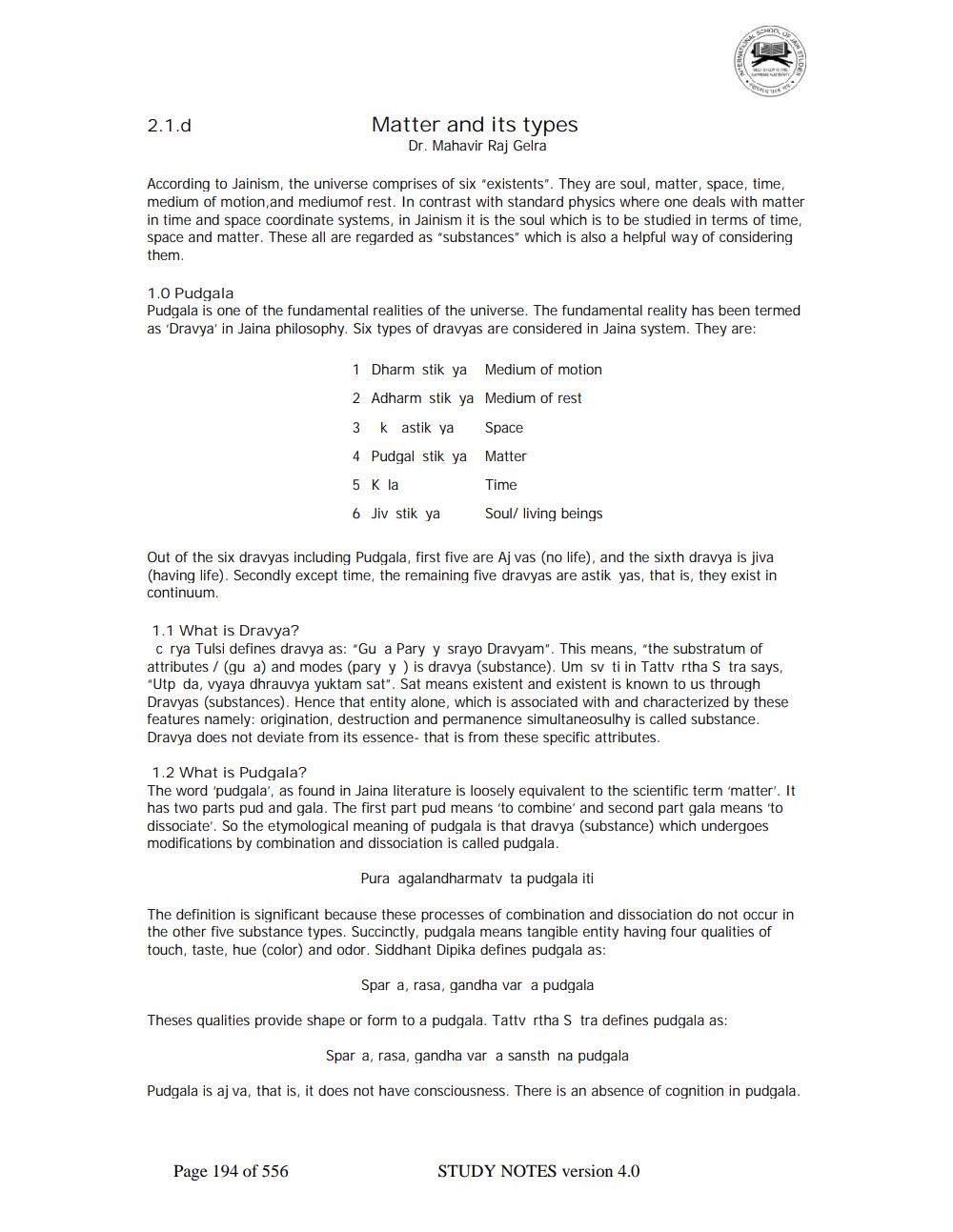________________
2.1.d
Matter and its types
Dr. Mahavir Raj Gelra
According to Jainism, the universe comprises of six "existents". They are soul, matter, space, time, medium of motion, and mediumof rest. In contrast with standard physics where one deals with matter in time and space coordinate systems, in Jainism it is the soul which is to be studied in terms of time, space and matter. These all are regarded as "substances" which is also a helpful way of considering them.
1.0 Pudgala Pudgala is one of the fundamental realities of the universe. The fundamental reality has been termed as 'Dravya' in Jaina philosophy. Six types of dravyas are considered in Jaina system. They are:
1 Dharm stik ya Medium of motion
2 Adharm stik ya Medium of rest 3 k astik ya Space 4 Pudgal stik ya Matter
5 K la
Time
6
Jiv stik ya
Soul/ living beings
Out of the six dravyas including Pudgala, first five are Aj vas (no life), and the sixth dravya is jiva (having life). Secondly except time, the remaining five dravyas are astik yas, that is, they exist in continuum.
1.1 What is Dravya?
c rya Tulsi defines dravya as: "Gu a Pary y srayo Dravyam". This means, "the substratum of attributes / (gu a) and modes (pary y ) is dravya (substance). Um sv ti in Tattv rtha S tra says, "Utp da, vyaya dhrauvya yuktam sat". Sat means existent and existent is known to us through Dravyas (substances). Hence that entity alone, which is associated with and characterized by these features namely: origination, destruction and permanence simultaneosulhy is called substance. Dravya does not deviate from its essence- that is from these specific attributes.
1.2 What is Pudgala? The word 'pudgala', as found in Jaina literature is loosely equivalent to the scientific term 'matter'. It has two parts pud and gala. The first part pud means 'to combine' and second part gala means 'to dissociate'. So the etymological meaning of pudgala is that dravya (substance) which undergoes modifications by combination and dissociation is called pudgala.
Pura agalandharmatv ta pudgala iti
The definition is significant because these processes of combination and dissociation do not occur in the other five substance types. Succinctly, pudgala means tangible entity having four qualities of touch, taste, hue (color) and odor. Siddhant Dipika defines pudgala as:
Spar a, rasa, gandha var a pudgala
Theses qualities provide shape or form to a pudgala. Tatty rtha S tra defines pudgala as:
Spar a, rasa, gandha var a sansth na pudgala
Pudgala is aj va, that is, it does not have consciousness. There is an absence of cognition in pudgala.
Page 194 of 556
STUDY NOTES version 4.0




